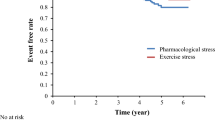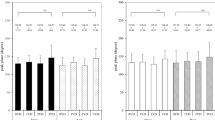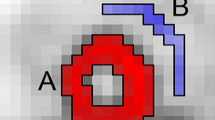Abstract
Background
There are limited data on the effect of tracer dose on the reproducibility and accuracy of left ventricular (LV) mechanical dyssynchrony indices by phase analysis of gated single photon emission computed tomography (SPECT) myocardial perfusion imaging (MPI).
Methods and Results
We measured LV dyssynchrony in 54 patients with normal LV ejection and perfusion (group 1) and 54 age and gender matched patients with LV ejection <35% (group 2) using phase analysis of gated SPECT MPI from stress (high dose) and rest (low dose) studies with 2 software programs: Corridor4DM (4DM) and Emory Cardiac Toolbox (ECTb). Although the correlation between rest- and stress-derived standard deviation was good (R = 0.76, P < .0001, with both software programs), there was considerable variability between the measurements (P < .0001 by paired t test). In addition, the rest standard deviation was significantly higher than stress in group 1 (10.2° ± 4.6° vs 6.1° ± 2.5°, and 12.2° ± 6.4° vs 7.9° ± 4.6°, with 4DM and ECTb, respectively, P < .0001 for both) and group 2 patients (44.0° ± 18.0° vs 35.9° ± 21.0° and 47.3° ± 19.2° vs 38.8° ± 19.8°, with 4DM and ECTb, P = .03 and .02, respectively). Similarly, the rest standard deviations were higher than the stress values irrespective of the type of stress test (i.e., exercise vs pharmacological), and the body mass index. Finally, using rest-derived dyssynchrony indices was associated with 9%-13% and 22%-26% false positive rate of significant mechanical dyssynchrony using different cut-off values for groups 1 and 2, respectively.
Conclusion
LV mechanical dyssynchrony indices by phase analysis have more variation and are significantly higher if derived from rest gated SPECT images obtained with low-dose tracer.






Similar content being viewed by others
References
Chen J, Garcia EV, Folks RD, Cooke CD, Faber TL, Tauxe EL, et al. Onset of left ventricular mechanical contraction as determined by phase analysis of ECG-gated myocardial perfusion SPECT imaging: Development of a diagnostic tool for assessment of cardiac mechanical dyssynchrony. J Nucl Cardiol 2005;12:687-95.
Chen J, Bax JJ, Henneman MM, Boogers MJ, Garcia EV. Is nuclear imaging a viable alternative technique to assess dyssynchrony? Europace 2008;10:iii101-5.
Aljaroudi W, Aggarwal H, Venkataraman R, Heo J, Iskandrian AE, Hage FG. Impact of left ventricular dyssynchrony by phase analysis on cardiovascular outcomes in patients with end-stage renal disease. J Nucl Cardiol 2010;17:1058-64.
Aljaroudi W, Koneru J, Iqbal F, Aggarwal H, Heo J, Iskandrian AE. Left ventricular mechanical dyssynchrony by phase analysis of gated single photon emission computed tomography in end-stage renal disease. Am J Cardiol 2010;106:1042-7.
Aljaroudi WA, Hage FG, Hermann D, Doppalapudi H, Venkataraman R, Heo J, et al. Relation of left-ventricular dyssynchrony by phase analysis of gated SPECT images and cardiovascular events in patients with implantable cardiac defibrillators. J Nucl Cardiol 2010;17:398-404.
Atchley AE, Trimble MA, Samad Z, Shaw LK, Pagnanelli R, Chen J, et al. Use of phase analysis of gated SPECT perfusion imaging to quantify dyssynchrony in patients with mild-to-moderate left ventricular dysfunction. J Nucl Cardiol 2009;16:888-94.
Trimble MA, Borges-Neto S, Smallheiser S, Chen J, Honeycutt EF, Shaw LK, et al. Evaluation of left ventricular mechanical dyssynchrony as determined by phase analysis of ECG-gated SPECT myocardial perfusion imaging in patients with left ventricular dysfunction and conduction disturbances. J Nucl Cardiol 2007;14:298-307.
Samad Z, Atchley AE, Trimble MA, Sun JL, Shaw LK, Pagnanelli R, et al. Prevalence and predictors of mechanical dyssynchrony as defined by phase analysis in patients with left ventricular dysfunction undergoing gated SPECT myocardial perfusion imaging. J Nucl Cardiol 2010;18:24-30.
Chen J, Garcia EV, Bax JJ, Iskandrian AE, Borges-Neto S, Soman P. SPECT myocardial perfusion imaging for the assessment of left ventricular mechanical dyssynchrony. J Nucl Cardiol 2011;18:685-94.
Chen J, Faber TL, Cooke CD, Garcia EV. Temporal resolution of multiharmonic phase analysis of ECG-gated myocardial perfusion SPECT studies. J Nucl Cardiol 2008;15:383-91.
Friehling M, Chen J, Saba S, Bazaz R, Schwartzman D, Adelstein EC et al. A prospective pilot study to evaluate the relationship between acute change in LV synchrony after cardiac resynchronization therapy and patient outcome using a single-injection gated-spect protocol. Circ Cardiovasc Imaging 2011;5:532–539.
Aljaroudi W, Koneru J, Heo J, Iskandrian AE. Impact of ischemia on left ventricular dyssynchrony by phase analysis of gated single photon emission computed tomography myocardial perfusion imaging. J Nucl Cardiol 2011;18:36-42.
Hansen CL, Goldstein RA, Akinboboye OO, Berman DS, Botvinick EH, Churchwell KB, et al. Myocardial perfusion and function: Single photon emission computed tomography. J Nucl Cardiol 2007;14:e39-60.
Germano G, Kiat H, Kavanagh PB, Moriel M, Mazzanti M, Su HT, et al. Automatic quantification of ejection fraction from gated myocardial perfusion SPECT. J Nucl Med 1995;36:2138-47.
AlJaroudi W, Jaber WA, Grimm R, Marwick T, Cerqueira M. Alternative methods for the assessment of mechanical dyssynchrony by phase analysis of gated single photon emission computed tomography myocardial perfusion imaging. Int J Cardiovasc Imaging 2011 (in press).
Trimble MA, Velazquez EJ, Adams GL, Honeycutt EF, Pagnanelli RA, Barnhart HX, et al. Repeatability and reproducibility of phase analysis of gated single-photon emission computed tomography myocardial perfusion imaging used to quantify cardiac dyssynchrony. Nucl Med Commun 2008;29:374-81.
Boogers MM, Chen J, Bax JJ. Myocardial perfusion single photon emission computed tomography for the assessment of mechanical dyssynchrony. Curr Opin Cardiol 2008;23:431-9.
Pazhenkottil AP, Buechel RR, Husmann L, Nkoulou RN, Wolfrum M, Ghadri JR, et al. Long-term prognostic value of left ventricular dyssynchrony assessment by phase analysis from myocardial perfusion imaging. Heart 2010;97:33-7.
Henneman MM, Chen J, Dibbets-Schneider P, Stokkel MP, Bleeker GB, Ypenburg C, et al. Can LV dyssynchrony as assessed with phase analysis on gated myocardial perfusion SPECT predict response to CRT? J Nucl Med 2007;48:1104-11.
Li D, Zhou Y, Feng J, Yuan D, Cao K, Garcia EV, et al. Impact of image reconstruction on phase analysis of ECG-gated myocardial perfusion SPECT studies. Nucl Med Commun 2009;30:700-5.
Saha G. Statistics of radiation counting. In: Saha G, editor. Physics and radiobiology of nuclear medicine. 3rd ed. New York: Springer; 2006. p. 34-43.
Al-Jaroudi W, Iqbal F, Heo J, Iskandrian AE. Relation between heart rate and left ventricular mechanical dyssynchrony in patients with end-stage renal disease. Am J Cardiol 2011;107:1235-40.
Galt JR, Garcia EV, Robbins WL. Effects of myocardial wall thickness on SPECT quantification. IEEE Trans Med Imaging 1990;9:144-50.
Vallejo E, Chaya H, Plancarte G, Victoria D, Bialostozky D. Variability of serial same-day left ventricular ejection fraction using quantitative gated SPECT. J Nucl Cardiol 2002;9:377-84.
Thorley PJ, Smith JM. Repeatability of left ventricular ejection fraction and volume measurement for 99mTc-tetrofosmin gated single photon emission computed tomography (SPECT). Nucl Med Commun 2005;26:345-9.
Trimble MA, Borges-Neto S, Honeycutt EF, Shaw LK, Pagnanelli R, Chen J, et al. Evaluation of mechanical dyssynchrony and myocardial perfusion using phase analysis of gated SPECT imaging in patients with left ventricular dysfunction. J Nucl Cardiol 2008;15:663-70.
Author information
Authors and Affiliations
Corresponding author
Additional information
Funds and disclosures: none.
Rights and permissions
About this article
Cite this article
AlJaroudi, W., Jaber, W.A. & Cerqueira, M.D. Effect of tracer dose on left ventricular mechanical dyssynchrony indices by phase analysis of gated single photon emission computed tomography myocardial perfusion imaging. J. Nucl. Cardiol. 19, 63–72 (2012). https://doi.org/10.1007/s12350-011-9463-z
Received:
Accepted:
Published:
Issue Date:
DOI: https://doi.org/10.1007/s12350-011-9463-z




